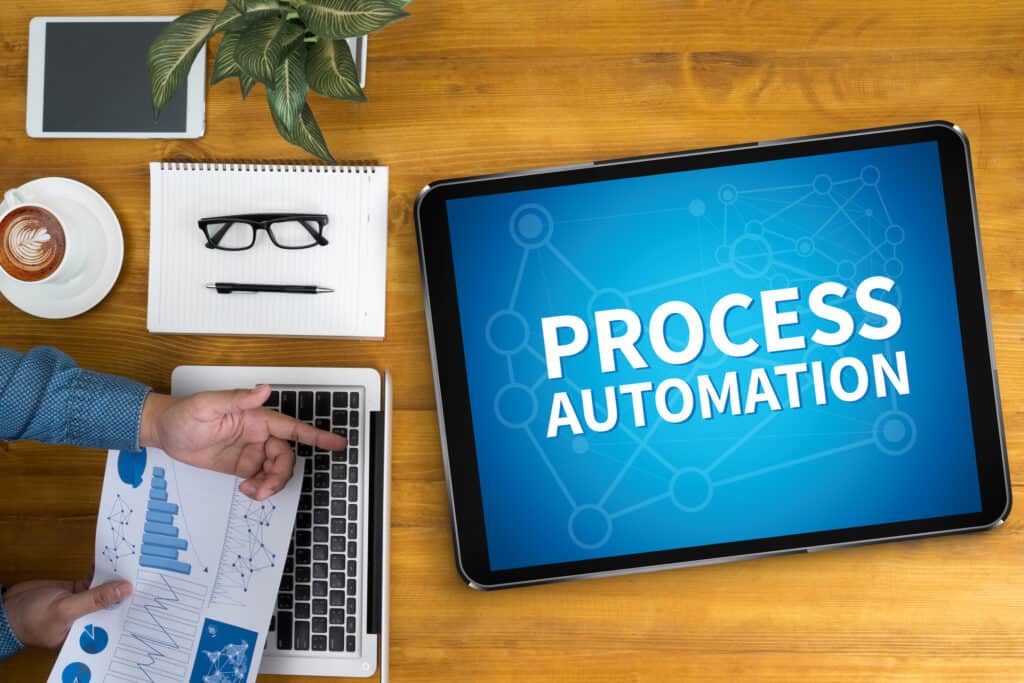In today’s fast-paced business environment, organizations constantly seek ways to streamline processes and enhance operational efficiency. One area where significant improvements can be made is in Accounts Payable (AP) processing, mainly through the adoption of touchless processing in the accounts payable department using an AP automation solution. This revolutionary approach to accounts payable automation offers numerous financial benefits, transforming traditional manual workflows into streamlined, cost-effective operations.
By leveraging digital invoice processing organizations can significantly streamline their accounts payable process, transforming it into a more efficient and cost-effective operation.
Financial Benefits of Touchless Invoice Processing
Reduced Processing Costs
One of the most immediate financial benefits of automated invoice processing is the significant reduction in processing costs. Manual invoice processing is labour-intensive and prone to errors, leading to increased operational expenses. By automating the AP Invoice process, organizations can eliminate manual data entry and reduce the need for extensive manpower. This not only minimizes labour costs but also enhances accuracy, mitigating the risk of costly errors and their associated consequences in the invoice processing workflow.
Faster Invoice Approval Cycles
Time is money, and the speed at which invoices are processed can have a direct impact on an organization’s financial health. Touchless invoice processing accelerates the approval cycle for invoice processing by automating routine tasks such as data extraction, invoice validation, and routing. This leads to faster invoice approvals, preventing late payment penalties and taking advantage of early payment discounts. The improved cash flow resulting from expedited processing positively impacts the bottom line and strengthens relationships with suppliers.
Enhanced Invoice Data Accuracy and Compliance
Manual data entry is susceptible to errors, and inaccuracies in financial transactions can lead to costly repercussions. Touchless invoice processing leverages advanced technologies such as Optical Character Recognition (OCR) to ensure accurate data extraction and invoice validation, including precise capture of critical details like the invoice number. This meticulous approach reduces the risk of errors and ensures compliance with regulatory requirements, contributing to cost savings and protecting the organization’s reputation.
Optimized Resource Allocation
Automating routine and repetitive tasks through automated invoice processing allows organizations to reallocate human resources to more strategic and value-added activities. Employees, especially those in the accounts payable team, can focus on tasks that require critical thinking, problem-solving, and relationship-building, contributing to overall organizational productivity. By optimizing resource allocation, businesses can achieve a higher return on investment (ROI) for their workforce. Implementing an AP automation solution enables this by automating routine and repetitive tasks, allowing organizations to reallocate human resources to more strategic and value-added activities.
Strategic Vendor Management
Touchless invoice processing enables organizations to gain valuable insights into vendor performance and invoice patterns. Advanced analytics tools integrated into AP Invoice Automation systems provide data-driven insights, empowering organizations to negotiate better terms with vendors, identify cost-saving opportunities, and strategically manage their supplier relationships. Furthermore, the system’s ability to organize and store invoice data securely facilitates effortless retrieval for audits, enhancing compliance and data management practices. This strategic approach to vendor management can result in significant long-term financial benefits, enhancing the overall efficiency and effectiveness of the accounts payable function. This analysis is powered by detailed invoice data, which helps identify spending patterns and optimize cost-saving strategies with key suppliers.
Improved Financial Visibility
The aggregation and analysis of invoice data in real-time enable finance teams to monitor spending trends, manage budgets more effectively, and make data-driven decisions. Real-time visibility into the AP Invoice process is crucial for effective financial management. Smart invoice processing systems provide dashboards and reporting tools that offer a comprehensive overview of the invoicing lifecycle. This transparency allows organizations to make informed decisions, identify bottlenecks, and implement continuous process improvements. Improved financial visibility contributes to better financial planning, forecasting, and decision-making.
Mitigated Fraud Risks
Manual Accounts Payable invoice processing workflow is susceptible to fraudulent activities, including invoice tampering and unauthorized payments. Implementing touchless invoice processing, powered by advanced invoice processing software, incorporates robust security measures such as encryption, access controls, and audit trails to mitigate fraud risks. By enhancing the security of the AP Invoice process, organizations can safeguard their financial assets and reputation, avoiding the potentially devastating financial consequences of fraud.
Touchless invoice processing not only mitigates fraud risks but also strengthens the overall security of the accounts payable process, safeguarding an organization’s financial assets against unauthorized access or tampering.
Integrating Paper Invoices into Touchless Invoice Processing
Despite the shift towards digital transformation, many businesses still receive a significant volume of paper invoices. Integrating these traditional documents into an intelligence invoice processing system presents unique challenges but is essential for achieving comprehensive automation. Advanced solutions like Optical Character Recognition (OCR) and intelligent document processing (IDP) technologies enable organizations to convert hardcopy invoices into digital formats seamlessly. These technologies ensure that data from physical and electronic invoices is accurately captured and integrated into the automation accounts payable (AP) processing workflow, allowing businesses to benefit from the efficiency and cost savings of automation across all invoice types in their invoice processing workflow. This holistic approach ensures no invoice, whether paper-based or digital, is left behind in the quest for operational efficiency.
Automated Invoice Processing Benefits Recap
In conclusion, the financial benefits of implementing touchless invoice processing in AP Invoice Automation are multifaceted, encompassing cost reduction, increased efficiency, improved accuracy, and strategic advantages. Organizations that embrace this transformative technology position themselves for long-term financial success. By optimizing their operational workflows and enhancing vendor relationships, businesses can achieve touchless invoice processing, not just as a competitive advantage but as a necessity for ensuring compliance with regulatory standards and achieving financial excellence in the evolving business landscape.
Frequently Asked Questions About Touchless Invoice Processing
What Initial Investments Are Required for Touchless Invoice Processing?
Implementing touchless invoice processing as a service involves minimal initial investments in software licensing, system implementation & interfacing, and staff training. These upfront costs are pivotal for ensuring a seamless transition to an automated system, enhancing operational efficiency and accuracy in invoice management.
How to Choose the Right Touchless Invoice Processing Solution?
Selecting the right touchless invoice processing solution requires evaluating factors such as compatibility with existing financial systems, scalability to support business growth, user-friendliness to ensure ease of use, and comprehensive vendor support for troubleshooting and updates.
What Challenges Might Businesses Face During Implementation and How to Overcome Them?
Common challenges during implementation include employee resistance, data migration issues, and integration hurdles. Overcoming these obstacles involves clear communication of benefits, ensuring robust training programs, and engaging with a vendor partner like ACI for technical support to ensure a smooth transition.
How Does Touchless Invoice Processing Affect Vendor and Customer Relationships?
Automated invoice processing can significantly enhance relationships with vendors and customers by improving payment accuracy, speeding up transaction cycles, and facilitating better communication. This results in greater satisfaction and trust, fostering stronger business partnerships.
What Compliance Considerations Are There With Touchless Processing?
Touchless invoice processing must adhere to compliance and regulatory standards, including financial reporting and audit requirements. Automated systems help ensure accuracy and consistency in financial transactions, aiding in compliance with relevant laws and regulations.
How Can Businesses Ensure a Smooth Transition to Touchless Invoice Processing?
Ensuring a smooth transition to touchless invoice processing requires comprehensive planning, engaging key stakeholders, and implementing the system in phases. Providing extensive training and choosing a user-friendly system are also crucial for minimizing disruption and maximizing adoption.
What Are the Long-Term Impacts of Touchless Invoice Processing on Business Operations?
The long-term impacts of touchless invoice processing include operational resilience, efficiency gains, and the capacity for continuous improvement. Automating invoice processing allows businesses to adapt to technological advancements, maintaining competitiveness in a rapidly evolving marketplace.
How to Track and Measure the Success of Touchless Invoice Processing Implementation?
Success in implementing touchless invoice processing can be measured by tracking key performance indicators (KPIs) such as reduction in processing time, cost savings, decrease in error rates, and improvements in employee productivity. These metrics offer valuable insights into the efficiency and effectiveness of the automation process.

